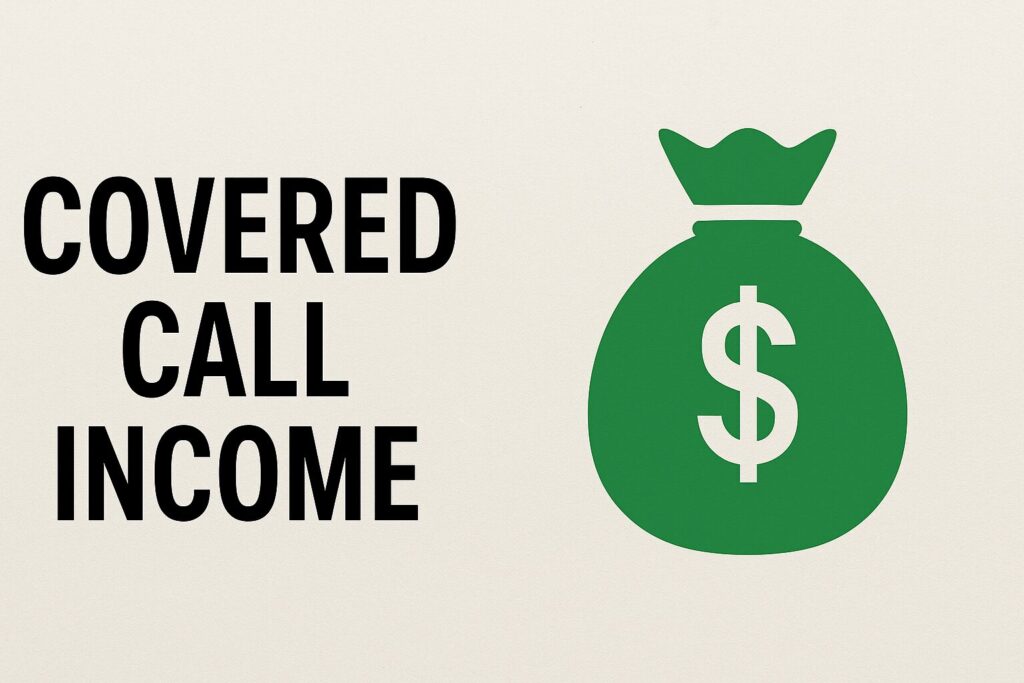
A Step-by-Step Guide to Boosting Your Retirement Income Safely and Confidently
If you’re a retiree looking to boost your income without taking big risks, you’ve probably heard of covered calls. But maybe you’ve been hesitant. Options? Strike prices? Expiration dates? It can sound complicated—or even risky.
The truth is, writing covered calls can be one of the safest and most effective ways for retirees to earn extra income from stocks they already own. When done properly, it’s a conservative strategy that generates steady cash flow while still preserving the long-term value of your investments.
This guide will walk you through how to write a covered call the right way—with low risk, low stress, and real-life examples that show you just how manageable it can be.
🧠 What Is a Covered Call?
A covered call is a strategy where you:
- Own 100 shares of a stock or ETF.
- Sell (write) a call option on that stock to someone else.
- In return, you receive a premium—money in your pocket.
In exchange, you agree to sell your shares at a set price (the strike price) if the stock goes above that price before the option expires.
It’s called “covered” because you already own the shares. You’re not betting—you’re renting out your stock for extra income.
🔐 Why It’s Ideal for Retirees
- ✅ Steady income from option premiums
- ✅ Low risk if you own stable, dividend-paying stocks
- ✅ Helps offset inflation or market volatility
- ✅ Simple to execute once you understand the basics
It’s like earning rent on a stock you already own—without giving up your dividends or long-term ownership (unless the stock is called away, which we’ll cover below).
🪜 Step-by-Step: How to Write a Safe Covered Call
1. Choose the Right Stock
Stick to large, stable companies—ideally ones you’d be happy to hold long-term, even if the price fluctuates.
Good candidates include:
- Dividend-paying blue chips (e.g., Johnson & Johnson, Coca-Cola)
- ETFs like SPY (S&P 500), VYM (high dividend), or SCHD (dividend growth)
Avoid:
- Volatile growth stocks
- Thinly traded stocks
- Anything you’re not comfortable holding
2. Own at Least 100 Shares
You need 100 shares per covered call. If you only own 50, you’re not eligible.
📌 Example: You own 100 shares of Coca-Cola (KO) at $60 per share.
3. Pick a Strike Price Above the Current Stock Price
This is the price at which you’re agreeing to sell the stock if it gets “called away.” Choose a strike price that:
- Is higher than your purchase price
- Is a price you’re comfortable selling at
- Offers a reasonable premium
💡 Tip: A strike price 5%–10% above current price is a good starting point.
4. Choose an Expiration Date
Most retirees choose monthly options, typically 30 days out.
Shorter time frames = more flexibility. Longer time frames = higher premiums but more risk of the stock getting called away.
🧠 Rule of thumb: Stick with 30–45 days to expiration for regular income and less risk.
5. Sell the Covered Call
Through your brokerage (like Fidelity, Schwab, or TD Ameritrade), go to the options trading section:
- Select “Covered Call”
- Choose the stock, strike price, and expiration
- Submit your order and collect the premium
Boom—you’ve just created a paycheck.
📈 Real-Life Example #1: Retired Income from Coca-Cola
- Shares owned: 100 shares of KO at $60
- Current price: $60
- Strike price: $62.50 (expires in 30 days)
- Premium received: $1.00 per share = $100 income
If KO stays below $62.50, you keep your shares and the $100. If KO rises above $62.50, your shares are sold (called away), and you still make a profit.
🔁 What to do: You can buy the shares back and do it again—or choose a new stock to write a call on.
📈 Real-Life Example #2: Conservative ETF Strategy with SCHD
- Shares owned: 200 shares of SCHD at $75
- Current price: $75
- Strike price: $78 (1-month call)
- Premium received: $0.90 per share = $180 total
You collect $180 upfront. If SCHD rises past $78, your shares are sold for a $3 per share gain plus you keep the $180 premium.
And if SCHD stays below $78? You keep your shares and do it all again next month.
⚠️ Common Mistakes to Avoid
- ❌ Selling calls too close to the current stock price. This increases the risk of having your shares called away too early.
- ❌ Using risky or volatile stocks. Stability is key for covered calls.
- ❌ Getting greedy with premiums. High premiums often come with high risk.
- ❌ Ignoring tax consequences. Options income is taxable, and frequent trades can trigger capital gains.
✅ Better strategy: Stick with stable stocks and ETFs, aim for small but consistent premiums, and let the strategy work over time.
🛠️ Tools to Help
- Covered Call ETFs (like JEPI or QYLD) do this automatically and pay monthly income. A great option if you prefer passive income without writing your own options.
- Brokerage platforms like Fidelity and Schwab often offer covered call screeners to help you find opportunities.
💬 Final Thought: Keep It Simple and Steady
Covered calls aren’t magic—but they are one of the safest ways to generate extra income from a retirement portfolio, especially if you already own dividend-paying stocks.
By choosing the right stocks, setting realistic strike prices, and keeping your time frames short and simple, you can earn reliable income every month—without unnecessary risk or sleepless nights.
Disclaimer: This blog post is for informational and educational purposes only. It does not constitute investment, financial, or tax advice. All investing involves risk, and options trading carries its own set of risks. Please consult a licensed financial advisor or tax professional before making investment decisions or trading options.